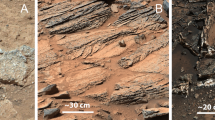Abstract
A suite of three optical instruments has been developed to observe Comet 9P/Tempel 1, the impact of a dedicated impactor spacecraft, and the resulting crater formation for the Deep Impact mission. The high-resolution instrument (HRI) consists of an f/35 telescope with 10.5 m focal length, and a combined filtered CCD camera and IR spectrometer. The medium-resolution instrument (MRI) consists of an f/17.5 telescope with a 2.1 m focal length feeding a filtered CCD camera. The HRI and MRI are mounted on an instrument platform on the flyby spacecraft, along with the spacecraft star trackers and inertial reference unit. The third instrument is a simple unfiltered CCD camera with the same telescope as MRI, mounted within the impactor spacecraft. All three instruments use a Fairchild split-frame-transfer CCD with 1,024× 1,024 active pixels. The IR spectrometer is a two-prism (CaF2 and ZnSe) imaging spectrometer imaged on a Rockwell HAWAII-1R HgCdTe MWIR array. The CCDs and IR FPA are read out and digitized to 14 bits by a set of dedicated instrument electronics, one set per instrument. Each electronics box is controlled by a radiation-hard TSC695F microprocessor. Software running on the microprocessor executes imaging commands from a sequence engine on the spacecraft. Commands and telemetry are transmitted via a MIL-STD-1553 interface, while image data are transmitted to the spacecraft via a low-voltage differential signaling (LVDS) interface standard. The instruments are used as the science instruments and are used for the optical navigation of both spacecraft. This paper presents an overview of the instrument suite designs, functionality, calibration and operational considerations.
Similar content being viewed by others
Abbreviations
- A/D:
-
analog to digital converter
- CCD:
-
charge coupled device
- DAC:
-
digital to analog converter
- DN:
-
digital number (or data number)
- EEPROM:
-
electrically erasable programmable read-only memory
- FPA:
-
focal plane array
- FPGA:
-
field programmable gate array
- FWHM:
-
full width at half maximum
- HRI:
-
high-resolution instrument
- IC:
-
instrument controller
- ICB:
-
instrument and impactor crosslink board
- IP:
-
instrument platform
- IR:
-
infrared
- IRS:
-
(Spitzer) infrared spectrograph
- ITC:
-
instrument time code
- ITOC:
-
Instrument Test and Operations Console
- ITS:
-
impactor targeting sensor
- LVDS:
-
low-voltage differential signaling
- LVPS:
-
low voltage power supply
- MIPS:
-
multiband imaging photometer for Spitzer
- MRI:
-
medium-resolution instrument
- MSSRD:
-
Mission, Science and Systems Requirements Document
- MTLM:
-
mechanism and telemetry board
- MWIR:
-
mid-wave infrared
- NVM:
-
non-volatile memory
- PROM:
-
programmable read-only memory
- PSF:
-
point spread function
- QE:
-
quantum efficiency
- S/C:
-
spacecraft
- SCU:
-
spacecraft control unit
- SIM:
-
spectral imaging module
- SNR:
-
signal to noise ratio
- SRAM:
-
static random access memory
- TPG:
-
timing pattern generator
- TVAC:
-
thermal vacuum (test)
- VME:
-
Versa Module Europa (IEEE 1014-1987 standard)
- VTC:
-
vehicle time code
References
A’Hearn, M. F.: 2005, Space Sci. Rev., this issue.
Ball Aerospace & Technologies Corporation: 2002, 561177 Instrument B-Specification, Revision D.
Hawkins, S. E., Darlington, E. H., Murchie, S. L., Peacock, K., Harris, T. J., Hersman, C. B., et al.: 1997, Space Sci. Rev. 82, 31.
Klaasen, K. P., Carcich, B., Carcich, G., and Grayzeck, E. J.: 2005, Space Sci. Rev., this issue.
Richardson, J., Melosh, H. J., Artemeiva, N. A., and Pierazzo, E.: 2005, Space Sci. Rev., this issue.
Schultz, et al.: 2005, Space Sci. Rev., this issue.
Tropf, W. J.: 1995, Optical Eng. 34, 1369.
Jet Propulsion Laboratory: 2004, Mission, Science, and Systems Requirements Document, JPL D-16496, Revision C.
Author information
Authors and Affiliations
Corresponding author
Rights and permissions
About this article
Cite this article
Hampton, D.L., Baer, J.W., Huisjen, M.A. et al. An Overview of the Instrument Suite for the Deep Impact Mission. Space Sci Rev 117, 43–93 (2005). https://doi.org/10.1007/s11214-005-3390-8
Received:
Accepted:
Issue Date:
DOI: https://doi.org/10.1007/s11214-005-3390-8




